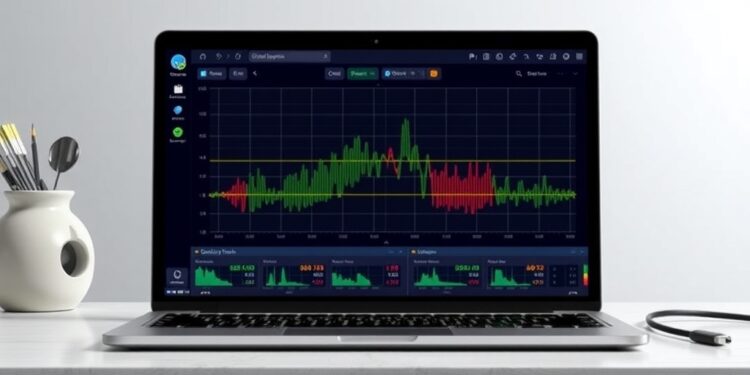Feasibility and Reliability of an Online Beat Alignment Test for Stroke Patients and Neurotypical Adults
In recent years, rhythm-based rehabilitation interventions have received considerable attention as pivotal tools in clinical settings. These interventions hold the potential to improve motor skills and cognitive functions in patients with various neurological conditions. As such, it is crucial to develop and validate effective approaches for measuring rhythm abilities, particularly in an environment that increasingly favors online delivery of assessments. A significant gap in the literature exists regarding the feasibility of administering rhythm measurement tools, specifically the Beat Alignment Test (BAT), online. This article explores the results of a groundbreaking study focusing on the feasibility, reliability, and learning effects associated with an online version of the BAT among neurotypical adults and individuals recovering from stroke.
As the healthcare landscape evolves and more assessments transition to digital formats, researchers are keen to understand how well standardized tests like the BAT can function in these settings. This is especially relevant for measuring rhythm abilities, a critical skill that has implications in both cognitive and physical rehabilitation contexts. The BAT serves as a vital assessment tool, encompassing both perception tasks—where participants determine if auditory tones overlaying music align with the beat—and production tasks, where they physically tap along to the rhythm. Understanding how these tasks can be reliably administered online is essential for future applications in clinical practice.
To investigate this, the study involved a diverse sample of participants, including thirty-nine neurotypical adults and twenty-three individuals with chronic stroke. Each participant undertook the BAT online across three testing sessions, spaced two to four days apart. This design not only facilitated an evaluation of the test’s feasibility but also allowed for the assessment of consistency in performance over multiple sessions. Researchers analyzed various factors, including completion rates, technical issues encountered during the test, participant experiences captured through post-test questionnaires, and duration taken to complete the tasks.
The findings yielded interesting insights. A greater proportion of feasibility criteria was met for the online BAT among neurotypical participants than those recovering from stroke. This discrepancy highlights potential challenges that exist when adapting rhythm assessment tools for individuals with more complex medical backgrounds. Technical difficulties were reported, which could hinder performance during an important assessment phase. This reveals the necessity for ongoing development and refinement of online platforms used for such tests.
When considering the reliability of the obtained results, inter-class correlations and standard error of measurement were utilized to evaluate the precision of the test. Most components of the online BAT demonstrated reliability, with an inter-class correlation coefficient (ICC) of at least 0.60, marking them as suitable for clinical use. However, perceptions tasks within the neurotypical group and production asynchrony among the stroke group fell short of this reliability threshold. This variability serves as a reminder of the complexities involved in rhythm-based assessments, particularly when factoring in the diverse abilities of participants.
Interestingly, despite considerable variation in performance across both groups, no learning effects were observed. This finding indicates that the test’s structure does not inherently lead to improvement in rhythmic ability with repeated exposure. This is particularly relevant for clinicians who wish to utilize such tests to track progress over time. In scenarios where learning effects are expected, the BAT shows limitations that must be addressed in future research.
The study underscores a key takeaway: while the online BAT presents an innovative approach to assess rhythm abilities in adults, its application remains more feasible for neurotypical individuals compared to those recovering from stroke. The challenges faced by stroke patients might stem from the online delivery platform employed for testing. For this vulnerable population, the user interface and accessibility features must be carefully considered to ensure accurate and reliable assessments.
Conclusions drawn from this study support the notion that while the BAT is a promising tool for online assessment of rhythm abilities, further work is required to adapt it effectively for diverse populations, particularly those with neurological impairments. Refining the technology and methodology behind such tests will inevitably shape the future of rhythm-based rehabilitative practices and their application in online healthcare settings.
As the need for scalable and accessible health assessments continues to rise, the importance of validating and refining online tests like the BAT cannot be overstated. By ensuring these tools are both reliable and user-friendly for all populations, researchers can contribute significantly to the advancement of rhythm-based rehabilitation interventions. This study serves as a crucial stepping stone in that ongoing effort, highlighting the importance of adaptive methods in the evolving field of biomedical engineering and rehabilitation.
Subject of Research: Online Beat Alignment Test Feasibility and Reliability
Article Title: Feasibility and reliability of an online version of the beat alignment test in neurotypical adults and people with stroke
News Publication Date: 2025
Web References:
References:
Image Credits:
Keywords: Beat Alignment Test, online assessment, rhythm rehabilitation, stroke recovery, neurotypical adults, reliability, feasibility, technology in healthcare.




